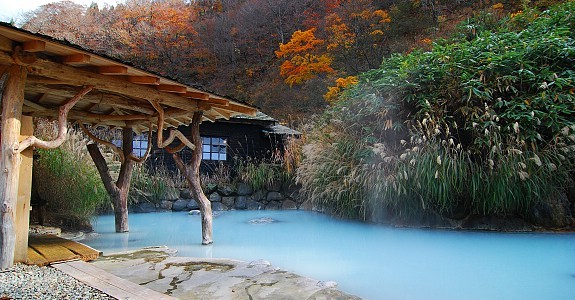Vincent Floderer's gorgeous construction Boom! assails the retina like a burst of intergalactic activity frozen in time, not the work of a contemporary origami artist. Instead of folding, theFrench artist's technique involves the application of watercolors and Indian ink to Wenzhou calligraphy paper, which he dampens, stretches and crumples to form jagged three-dimensional corals, sponges and other organic and abstract creations.
Boom! is among the many highlights of The Japanese American National Museum's Folding Paper: The Infinite Possibilities of Origami, the first major exhibition to look at origami as a contemporary art form. Featuring 150 works by 40 international artists from 16 countries, it is also a survey of the explosion in global origami art over the past fifty years.
Some of the show's exquisitely beautiful origami forms are the works of artists with backgrounds in sculpture, architecture or design; others trained as physicists, mathematicians and engineers. Many have turned their childhood passion for origami into complex explorations of tessellation (the creation of repeating abstract and textured patterns), modular origami and sculptural animal, insect and flower shapes. The work of the scientifically based artists has given rise to "origami math," "computational origami," and algorithms that map the way for artists to fold increasingly intricate shapes from a single sheet of paper. The exhibit also includes examples of origami's infiltration into the worlds of fashion, design, architecture, medical research, astronomy and manufacturing.
"Folding Paper" will be on view in Los Angeles through August 26, then travel to museums in Sacramento, CA; Portland, OR; Keene, NH; Peoria, IL, and Wasau, WI through August 2014. Organized by independent curator, author and educator Meher McArthur for the traveling exhibit service of the non-profit organization International Art & Artists, the show, which opened on March 10, has been the hit of the season for JANM.
McArthur, who specializes in Asian art, compares origami in Japan to woodblock prints in the late 19th century, when Japanese treated them so casually they would pack pieces of porcelain in them to send to Europe. Or to Japanese bamboo baskets, which only recently gained the status of an art form in Japan. "There was never a distinction between art and craft," she explains, although today the Japanese have adopted the Western distinction.
One artist represented in the exhibit, physicist and full-time origami artist and educator Robert Lang, has designed and catalogued over 500 original origami patterns, created origami algorithms, and invented a revolutionary new technique that allows for the addition of multiple appendages using a single sheet of paper. Lang has also applied origami techniques in his designs for a folding glass lens for a giant space telescope at Lawrence Livermore National Laboratory and an automobile air bag. The algorithms, he says, involve the principles of both algebra and geometry, and "a lot of manipulating squares and rectangles, like packing shapes in a box."
One artist represented in the exhibit, physicist and full-time origami artist and educator Robert Lang, has designed and catalogued over 500 original origami patterns, created origami algorithms, and invented a revolutionary new technique that allows for the addition of multiple appendages using a single sheet of paper. Lang has also applied origami techniques in his designs for a folding glass lens for a giant space telescope at Lawrence Livermore National Laboratory and an automobile air bag. The algorithms, he says, involve the principles of both algebra and geometry, and "a lot of manipulating squares and rectangles, like packing shapes in a box."
Yet Lang notes that the "growth and interest in origami preceded the heavy involvement of math," with the real renaissance occurring in the mid-20th century. Pioneer Akira Yoshizawa was responsible for turning what had been considered a children's pastime in Japan into a form of sculptural art. On March 14 of this year, Yoshizawa's birthday, Google asked Lang to design (after signing a non-disclosure agreement) the origami shapes that became this logo on Google's Web site.
The architectural portions of the exhibit include this short documentary on an origami-inspired temporary chapel, St. Loup, in the foothills of the Jura in Switzerland, and a reference to another origami-based building, the Klein Bottle House in Melbourne, Australia. Origami fashion is represented by Linda Tomoko Mihara and L.A. fashion designer Monica Leigh, and the exhibit's one installation is a menacing swarm of origami locusts made from sheets of U.S one dollar bills, by Swiss-South African artist Sipho Mabona.
Nancy Matsumoto is a New York City-based freelance writer who writes frequently on Japanese American issues and culture.






